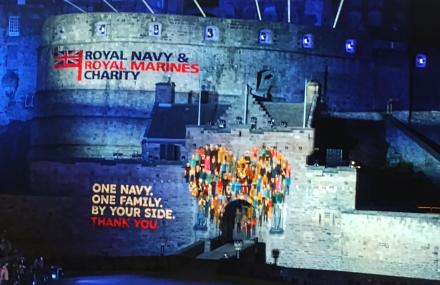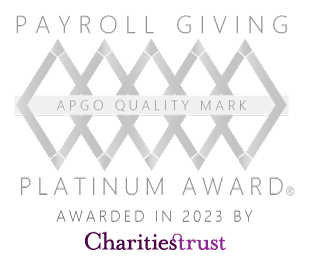Commander Jane Allen is taking on a charity walk around the coastline of mainland Britain. This latest update from Jane comes directly from the Scottish Highlands.
"The Kessock bridge led me out of Inverness, from where I walked onto what is confusingly known as the Black Isle. It’s not an island, but a peninsula of land within the shire of Ross and Cromarty, an area dominated by agriculture and forestry. I plunged into my first wood straight after the bridge crossing, but soon encountered difficulties: the planned route crossed new plantation areas where high, inaccessible deer fencing had been erected.
Path and routing difficulties are a constant problem. I see no point in hacking my way through forest undergrowth, being shredded by swathes of gorse bushes, or wading over slippery green rocks in muddy estuaries. I do my best to keep as close to the coast as possible, but realise that road walking is unavoidable and will probably increase the further north and west I go into Scotland. This week I’ve frequently found myself amongst chest high soaking wet vegetation in full bloom or wading through knee-high nettles and thistles.
I’d already planned not to walk the entire Black Isle peninsula, avoiding the needless circle into Dingwall and Invergordon. Instead, I opted to use the seasonal ferry (permitted within my rules) that runs across the mouth of the Cromarty Firth to the village of Nigg Ferry. Capable of carrying only 2 cars, it’s the smallest car ferry in Britain and resembles a landing craft. My ten-minute passage in the rain over a grey Cromarty Firth saved me 42 miles of walking but immediately presented me with a steep hill to climb. Justice!
During both World Wars, the Cromarty Firth provided deep and sheltered water. Therefore, in the 1970s Nigg became an obvious choice to construct and maintain drilling platforms when the North Sea oil business was at its height. Today, platforms are still maintained here but the Global Energy Group facility has diversified into the offshore wind farm business too.
That night at Nigg, whilst parked in the shadow of the Ocean Valiant platform, we felt the brunt of Storm Hector. All night the van was struck by savage gusts of wind - we could hear dustbin lids banging, while their contents of cartons, tins and rubbish were being swirled around the car park.
Next morning I saw the storm damage for myself: grass in fields waiting to be mown had been flattened; branches, twigs and leaves lay scattered in roads; gardens and roadside verges were strewn with an array of broken flower heads and damaged bushes. Although I wasn’t walking into a headwind, the dust and grit being churned along the roads and paths required me to wear protective goggles for most of the day.
To reach my next big crossing at Dornoch Firth I went via Tarbat Ness, a remote lighthouse headland. It required many hours of walking below high cliffs and over beaches full of large stones and boulders before ‘I saw the light’! I’d frequently read that I was in an area where dolphins could be seen, but all I saw that day was a mermaid sitting on a rock: a striking bronze statue at Balintore. As I walked to Tarbat point I passed several disused bothies, and apart from encountering grazing sheep, I met no one all day. Its seclusion did not disappoint, but with Storm Hector flinging his final squalls, I eventually arrived at blustery Portmahomack utterly drenched.
In an effort to dry off we booked into a campsite for the night. Run by the local vicar, who was everything from Warden to Mr Maintenance, the site generates income which pays for the upkeep of his vast church. I admired his initiative! Other overnight stops this week have included a fishing lake and parking on private driveways.
The heavy showers continued next day as I made my way along the Dornoch Firth to renew my acquaintance with its bridge: I’d not been there since my 2007 John o’ Groats to Land’s End charity walk. It was here in 2007 that I celebrated my first 100 miles heading south. This time, going north, my Victory Walk mileage had just clocked 1,900 miles as I entered the county of Sutherland.
Since then I spent a long, wet day walking the entire perimeter of Loch Fleet before reaching Golspie, a town whose skyline is dominated by the prominent Duke of Sutherland Monument. Later I passed Dunrobin Castle the family seat and home to Clan Sutherland. With its 189 rooms, it is a marked contrast to the tiny bothies I passed earlier in the week.
To conclude, I am now in ‘End -to-Ender’ country, with people tackling the Land’s End to John o’ Groats challenge by whatever means takes their fancy. I’ve already met a cyclist who had just completed the journey northbound and a fellow RN sailor who has just begun his southbound walk. But perhaps the ‘End-to-Ender’ facing a much greater challenge than these two is the man I saw today walking northbound with his guide. He is blind."










